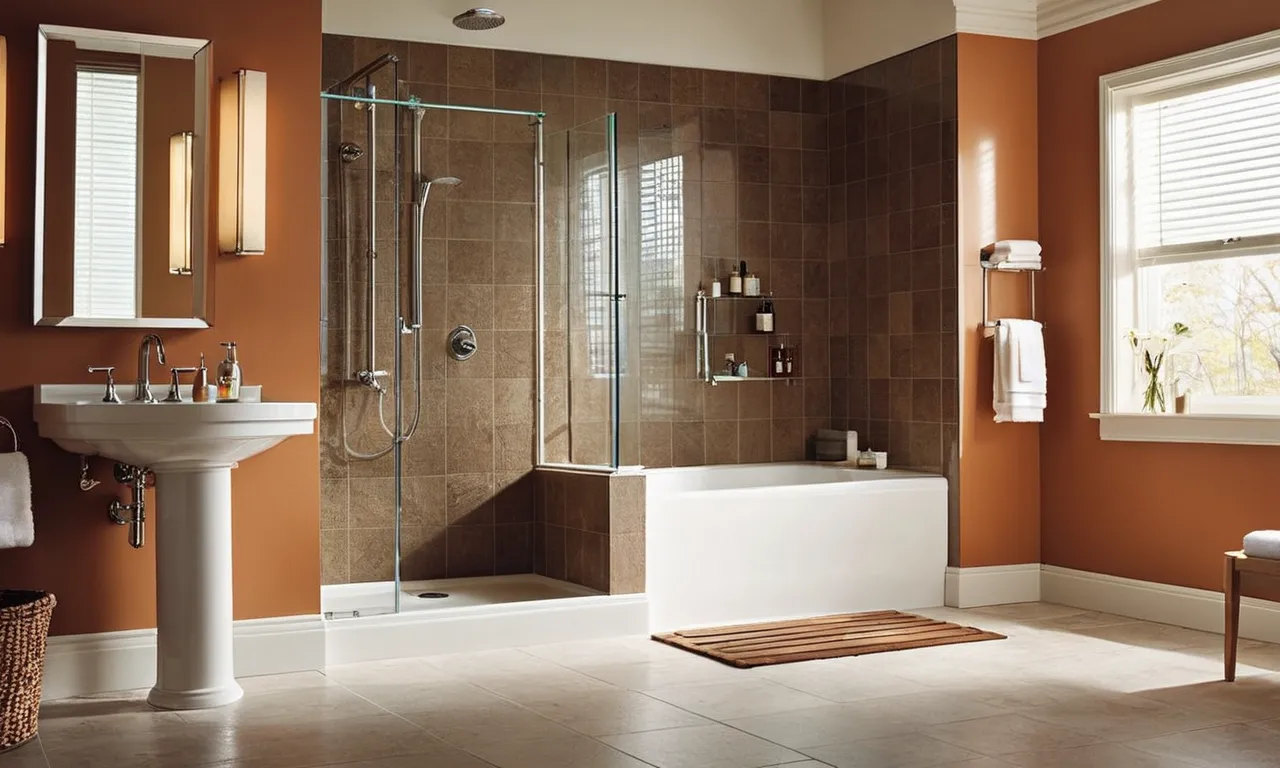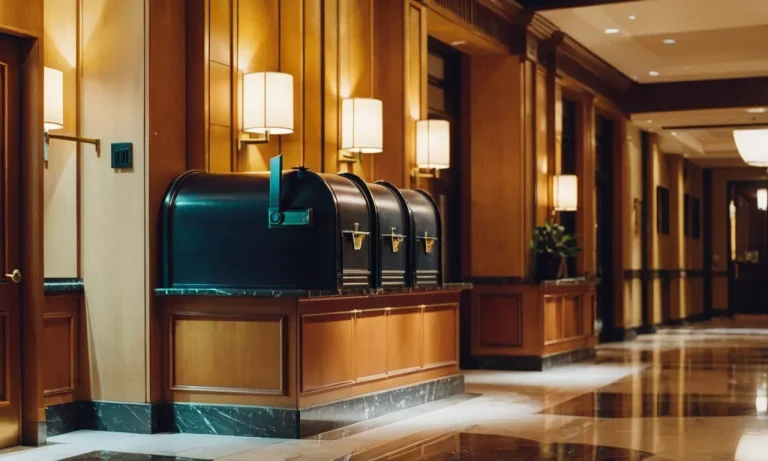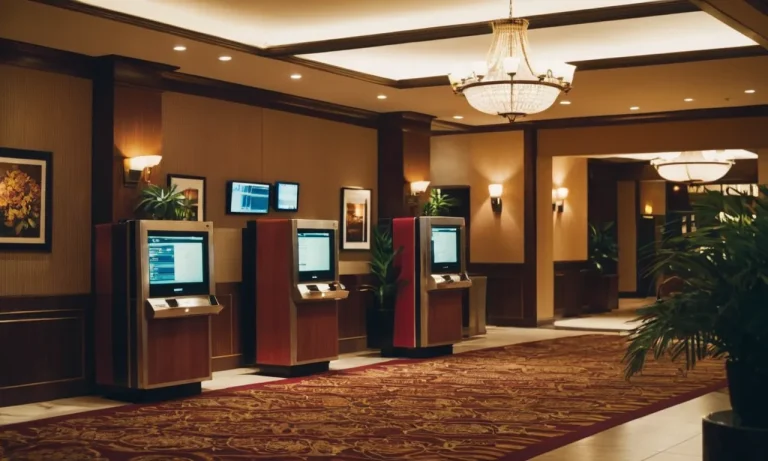What Is A Transfer Shower In A Hotel? A Comprehensive Guide
Have you ever wondered about the purpose of those peculiar shower stalls in hotel bathrooms? Those spacious, barrier-free enclosures are known as transfer showers, and they’re designed to cater to the needs of guests with mobility challenges.
If you’re short on time, here’s a quick answer to your question: A transfer shower in a hotel is a specialized bathroom feature that provides an accessible and safe showering experience for individuals with disabilities or limited mobility.
It typically features a curbless entry, grab bars, a built-in bench or seat, and a handheld showerhead, allowing for easy transfer from a wheelchair or mobility aid.
In this comprehensive article, we’ll delve into the intricacies of transfer showers, exploring their design, purpose, and the benefits they offer to hotel guests. We’ll also discuss the importance of accessibility in the hospitality industry and how transfer showers contribute to creating an inclusive environment for all.
Understanding Transfer Showers
What is a Transfer Shower?
A transfer shower, also known as an accessible or roll-in shower, is a type of shower designed to provide easy access and enhanced safety for individuals with mobility challenges, disabilities, or those who simply prefer a barrier-free showering experience.
Unlike traditional showers with raised curbs or tubs, transfer showers feature a level entry, allowing users to easily roll a wheelchair or walker directly into the shower area without the need for stepping over a threshold.
Key Features of Transfer Showers
- Level entry: The absence of a raised curb or threshold allows for seamless access, making it easier for individuals with mobility issues to enter and exit the shower.
- Grab bars: Strategically placed grab bars provide support and stability, reducing the risk of slips and falls.
- Adjustable showerheads: Many transfer showers come equipped with handheld or adjustable showerheads, allowing users to control the water flow and direction with ease.
- Non-slip surfaces: The shower floor is designed with textured or slip-resistant materials to prevent accidents.
- Ample space: Transfer showers typically offer generous dimensions, allowing for comfortable maneuvering and the use of assistive devices if needed.
Accessibility and Inclusivity in Hotels
In recent years, the hospitality industry has placed a greater emphasis on accessibility and inclusivity, recognizing the need to cater to guests with diverse abilities and requirements. According to a study by the U.S.
Department of Justice, approximately 60% of hotels and motels have at least some level of accessible features, with transfer showers being a crucial component.
By incorporating transfer showers into their guest rooms, hotels not only demonstrate a commitment to inclusivity but also open their doors to a broader range of travelers. This inclusivity extends beyond guests with disabilities, as transfer showers can also benefit individuals recovering from injuries, the elderly, and those who simply prefer a more accessible showering experience.
It’s a win-win situation, as hotels can attract a wider customer base while providing a safe and comfortable environment for all guests.
Leading hotel chains, such as Marriott and Hilton, have recognized the importance of accessibility and have implemented guidelines to ensure that a certain percentage of their rooms are equipped with transfer showers and other accessible features.
This effort aligns with the principles of the Americans with Disabilities Act (ADA) and demonstrates a commitment to creating an inclusive and welcoming environment for everyone.
As the world becomes increasingly conscious of the need for accessibility and inclusivity, it’s heartening to see the hospitality industry embracing transfer showers and other accessible features. By doing so, hotels can provide a more enjoyable and comfortable experience for all guests, regardless of their abilities or circumstances.
😊
Design Elements of Transfer Showers
When it comes to ensuring accessibility and safety in hotel bathrooms, transfer showers have become a game-changer. These innovative shower designs are tailored to cater to guests with mobility challenges, offering a comfortable and dignified bathing experience.
Let’s dive into the key elements that make transfer showers stand out:
Curbless Entry
One of the most distinctive features of a transfer shower is its curbless entry. Unlike traditional showers with a raised threshold, these showers are designed with a seamless, level surface that allows for easy access, especially for guests using wheelchairs or walkers.
According to the Americans with Disabilities Act (ADA), this barrier-free design is a crucial requirement for accessible bathrooms.
Grab Bars and Support Rails
To enhance safety and stability, transfer showers are equipped with strategically placed grab bars and support rails. These sturdy fixtures provide guests with secure handholds, enabling them to transfer from their mobility aids to the built-in seating or shower area with confidence.
The Accessibility Online Resource Center recommends installing grab bars at appropriate heights and locations to accommodate users of varying abilities.
Built-in Seating
Many transfer showers feature built-in seating, such as a fold-down bench or a permanent seat. This thoughtful design element allows guests to comfortably sit while showering, reducing the risk of slips and falls.
According to a study by the Centers for Disease Control and Prevention (CDC), approximately 235,000 people visit emergency rooms each year due to bathroom-related injuries. Built-in seating can significantly mitigate this risk, especially for guests with balance or mobility issues.
Handheld Showerheads
To further enhance accessibility, transfer showers often incorporate handheld showerheads with adjustable height and flexible hose connections. This feature allows guests to easily direct the water flow as needed, whether they are seated or standing.
Handheld showerheads also facilitate assisted bathing for those who require additional support. According to a survey by AAHOA (Asian American Hotel Owners Association), over 80% of hotel guests prefer rooms with accessible shower facilities.
By incorporating these thoughtful design elements, transfer showers in hotels provide a safe, comfortable, and inclusive bathing experience for guests with varying abilities. Don’t underestimate the power of these seemingly small details – they can make a world of difference in ensuring a memorable and stress-free stay for all guests.
👏🎉
Benefits of Transfer Showers for Hotel Guests
Enhanced Safety and Comfort
Transfer showers in hotels offer a heightened level of safety and comfort for guests with mobility challenges or disabilities. These specialized showers are designed with accessibility in mind, featuring a low-threshold entry, grab bars, and a fold-down or built-in bench.
This innovative design allows guests to easily transfer from a wheelchair or mobility aid directly into the shower area, reducing the risk of slips, falls, and injuries. According to a study by the Centers for Disease Control and Prevention, falls are the leading cause of non-fatal injuries among older adults, making transfer showers a crucial amenity for hotels catering to this demographic.
Independence and Dignity
Transfer showers empower hotel guests to maintain their independence and dignity during their stay. By providing a safe and accessible bathing environment, guests can attend to their personal hygiene needs without relying heavily on assistance from caregivers or hotel staff.
This level of autonomy can be incredibly empowering, especially for those who value their privacy and self-sufficiency. A report by the American Association on Health and Disability highlights the significance of maintaining independence and dignity for individuals with disabilities, as it fosters a sense of control and self-worth.
Catering to Diverse Needs
Transfer showers cater to the diverse needs of hotel guests, ensuring an inclusive and welcoming experience for all. Beyond their primary function of assisting individuals with mobility challenges, these showers can also benefit guests recovering from injuries or surgeries, elderly travelers, and families with young children.
The accessibility features, such as grab bars and non-slip surfaces, provide an added layer of safety and convenience for a wide range of guests. According to a report by the Americans with Disabilities Act, approximately 61 million adults in the United States live with a disability, underscoring the importance of inclusive design in the hospitality industry.
By offering transfer showers, hotels demonstrate their commitment to inclusivity and a positive guest experience for all. These specialized showers not only enhance safety and comfort but also promote independence, dignity, and a welcoming environment that caters to diverse needs.
As the demand for accessible travel continues to grow, transfer showers are becoming an increasingly valuable amenity for hotels striving to provide exceptional service and accommodate a diverse range of guests. 😊👏
Accessibility Standards and Regulations
When it comes to hotel accommodations, accessibility is a crucial aspect that cannot be overlooked. Transfer showers, in particular, are designed to cater to individuals with mobility challenges, ensuring that their bathing experience is safe, comfortable, and dignified.
To ensure compliance and promote inclusivity, various accessibility standards and regulations have been established, which hotels must adhere to.
ADA Guidelines for Transfer Showers
The Americans with Disabilities Act (ADA) is a comprehensive civil rights law that prohibits discrimination against individuals with disabilities in all areas of public life, including public and private places of accommodation.
The ADA Standards for Accessible Design provide specific guidelines for transfer showers in hotels. These guidelines outline requirements for shower dimensions, clearance space, grab bars, controls, and other essential features to ensure accessibility and safety for individuals with disabilities.
International Building Codes and Standards
In addition to the ADA guidelines, various international building codes and standards have been established to promote accessibility in the built environment. Organizations such as the International Code Council (ICC) and the International Organization for Standardization (ISO) have developed comprehensive accessibility standards that are widely adopted and recognized globally.
These standards provide detailed specifications for transfer showers, ensuring that hotels worldwide can comply with best practices and meet the needs of guests with disabilities.
Importance of Compliance
Compliance with accessibility standards and regulations is not only a legal obligation but also a moral imperative. By adhering to these guidelines, hotels can create an inclusive environment that promotes equal opportunities and respects the dignity of all guests.
Failure to comply can result in legal consequences, such as fines or lawsuits, as well as reputational damage and loss of business. Moreover, providing accessible accommodations is a testament to a hotel’s commitment to diversity, equity, and inclusion.
According to a study by the U.S. Census Bureau, approximately 61 million adults in the United States live with a disability, representing a significant portion of the population. By ensuring compliance with accessibility standards, hotels can tap into this market and provide a welcoming and inclusive experience for all guests, regardless of their abilities.
😊
Conclusion
Transfer showers in hotels are more than just a practical bathroom feature; they represent a commitment to inclusivity and accessibility. By providing a safe and comfortable showering experience for guests with mobility challenges, hotels can create an environment that fosters independence, dignity, and equal opportunities for all.
As the hospitality industry continues to evolve, the integration of accessible design elements like transfer showers becomes increasingly crucial. Not only does it cater to the diverse needs of guests, but it also demonstrates a hotel’s dedication to creating an inclusive and welcoming atmosphere for everyone who walks through their doors.
By understanding the purpose, design, and benefits of transfer showers, hotels can take a proactive step towards ensuring that their facilities are accessible and accommodating to all guests, regardless of their physical abilities.
This commitment to accessibility not only enhances the overall guest experience but also sets a standard for inclusivity that resonates throughout the industry.








